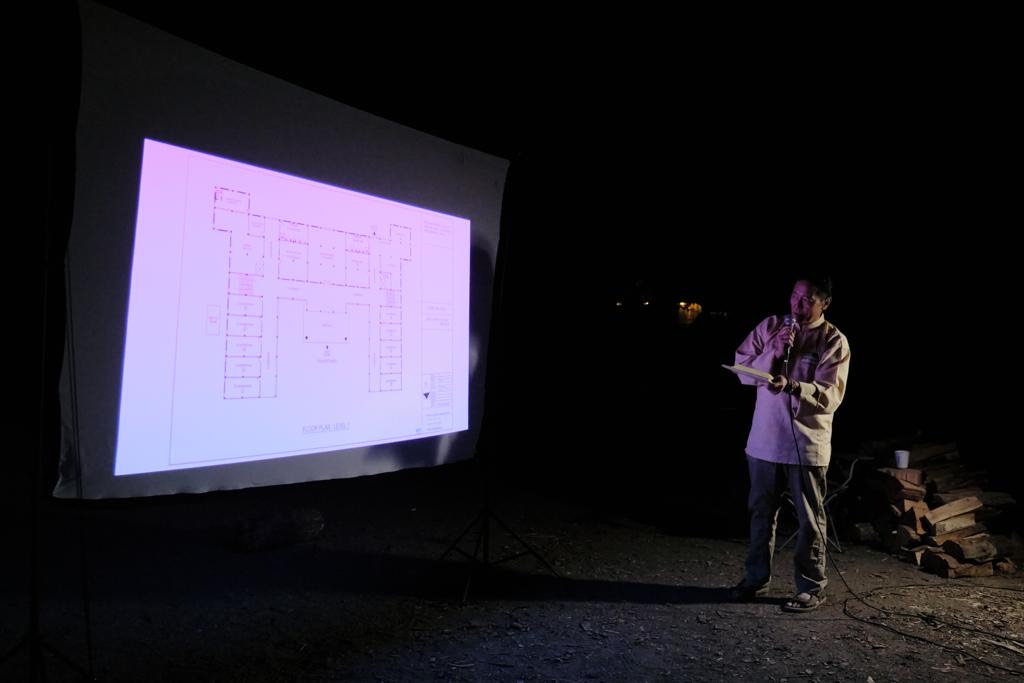Preserving the Sakya Tibetan Buddhist Heritage for future generations
H.E. Dagmo Kusho’s Ghost Stories
Around the campfire with fellow Marici Fellows, we listened to our beloved Guru, loving Mother, Grandmother and Tara, Her Eminence Dagmo Kushog Jamyang Palmo.
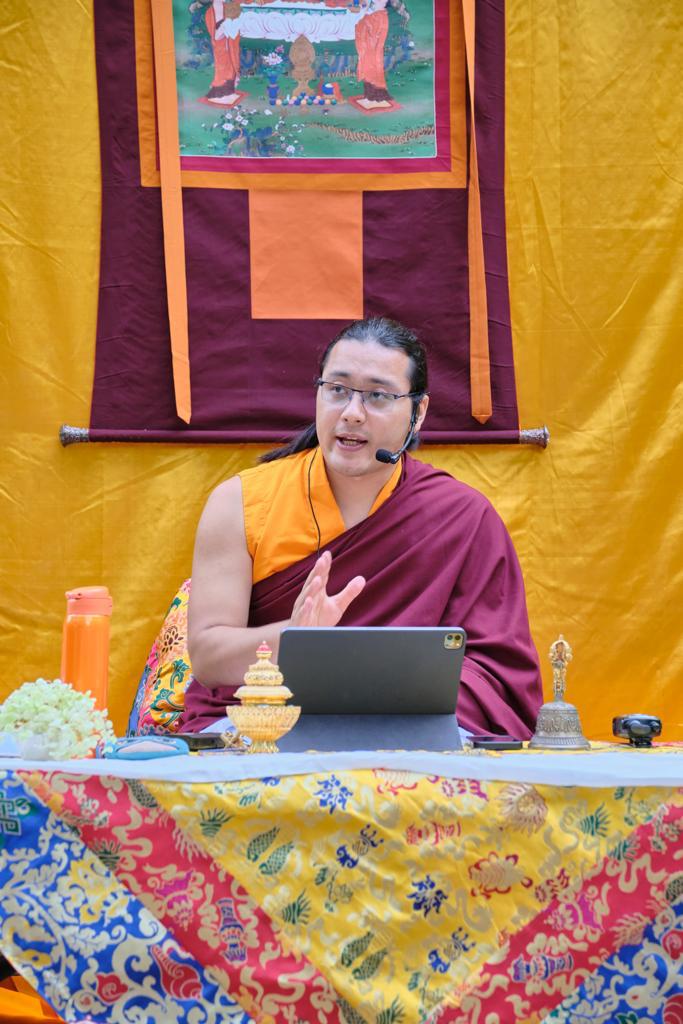
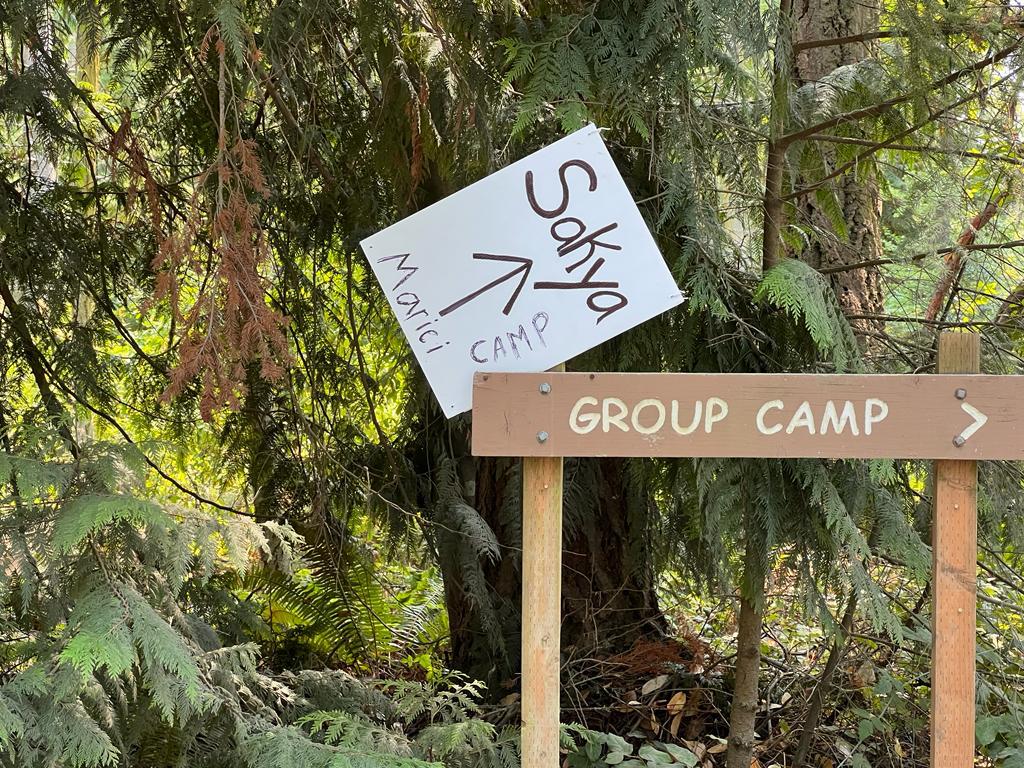
HE Avikrita Rinpoche bestows the Manjushri Namosamgiti Initiation and oral transmission of the Litany of Epithets in Praise of Manjushri on September 6 in the campground amphitheater.
H.E. Dagmo Kushola, who had been in the camp since 8am declared her intention to tell Tibetan Ghost Stories after the Family Feud Game had concluded. It was 9:15 pm. H.E. Zaya Rinpoche had rigged an ingenious mobile sound system with speakers, sound board, projector, projector screen, rechargeable generator, power cords and more. Under the star spangled sky next to the camp fire with all of us gathered around Dagmo Kushola told GHOST stories. Standing behind the backgammon card table holding the hand held mic she boldly spoke into the microphone declaring loudly, “Wait, before you go I would like to tell some ghost story. These are not just stories, these are things that happened in my lifetime.”
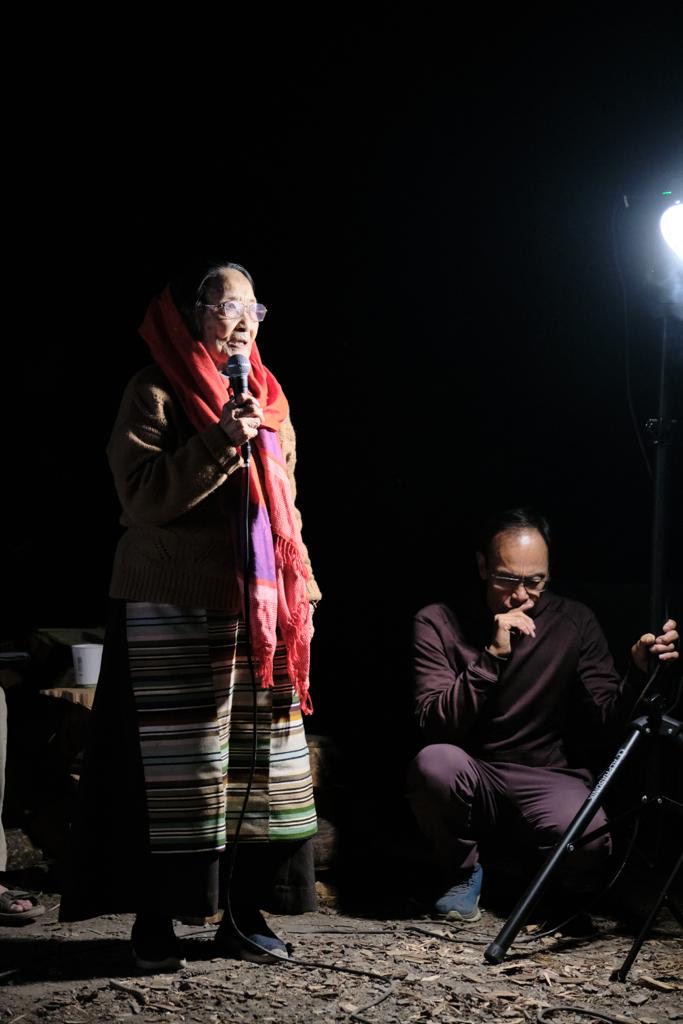
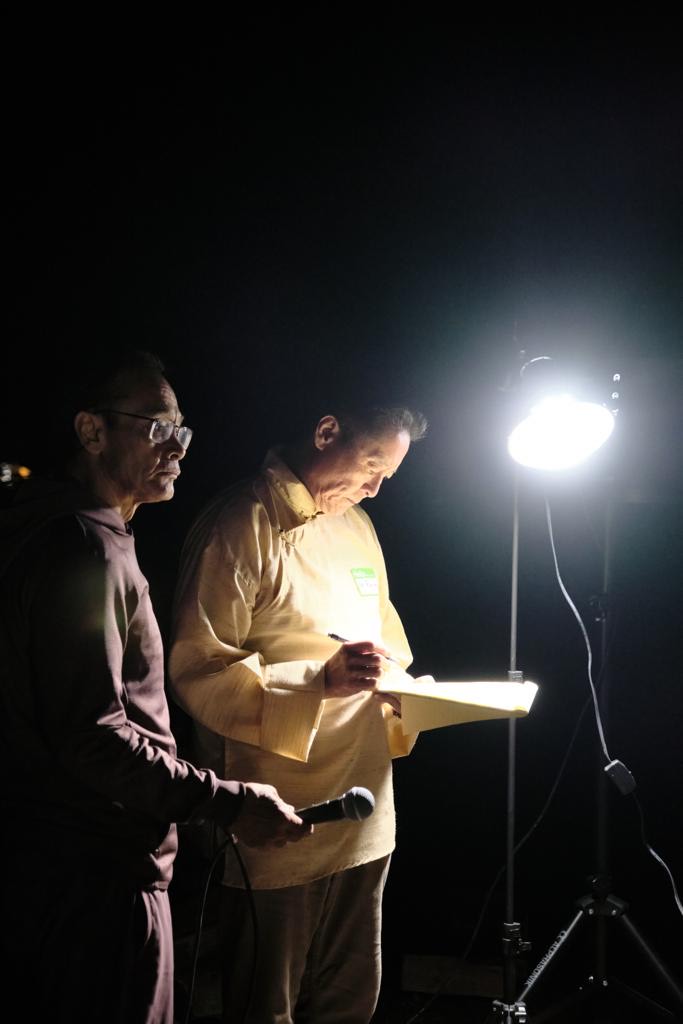
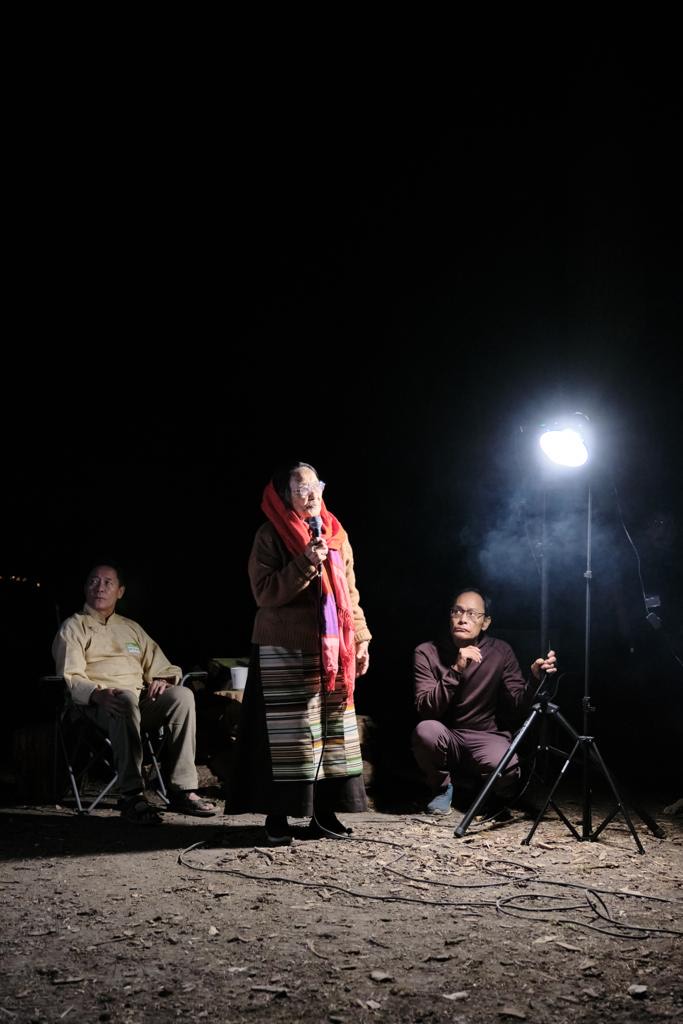
Dagmo Kushola went on, “There are 2 stories I will tell: ghost and demoness.”
Story #1: BAMO
She continues, (paraphrased and transcribed by Laura): Before Padmasambhava came to Tibet there was lots of demons and evil, cannibals – people eating each other. There was no Dharma at all. In the 7th or 8th century Padmasambhava subdued bad spirits and brought them into Buddhism as protectors. Before that, these horrible demons were doing witchcraft, they would gather and take life by the most awful means. One of these was Bamo.
There were three main witches of the Sakya Tradition. Known as “Bamo Sum”, they were: Mamo Rikye, Namka Drolma, and Shangmo. They were in the form of a beautiful lady with a lovely figure, beautiful ornaments, and nice hair but they had an aged face. This was because of their history. Outside of the main Sakya temple in Sakya, Tibet there was a Bamo Temple. Every day, the Sakya Monastery monks would do prayers to benefit Bamo and take care of her with food and torma and other rituals. One time when the caretaker monks had gone to town, they had a little too much chang (in Tibet chang and tea are the most common offering made to guests. Dagmola says, “Never water” (that would be insulting, she adds).
“So the monks were heading back up the hill to Sakya but they could not make it because they had partook of a little too much chang. By the way, Dagmola said it was acceptable for these monks to drink chang. In due time the monks fell asleep beside the road on their way back to their temple. “The monks drank the chang and one time they were too drunk and can’t go up the hill to the Monastery.” The Bamos came and carried them back to the Monastery. In the morning they woke up back at the Monastery.
Even today there is still Bamo dancing and prayers. The Sakya monks still offer torma to them. They protect the Sakya Khon Lineage. When they were subdued they had to promise to do no harm to any sentient being. However, Bamo has permission to harm those who hurt the Dharma. She does this by: 1) warning the individual, 2) harming the individual 3) harming the individual’s family generations.
In Sakya, Tibet there were no lights. Nobody walks at night without incense because the Bamos are going around protecting. If you accidentally bump into a Bamo you might get sick or hurt.
H.H. Jigdral Dagchen Sakya Dorje Chang’s niece, Tsering Drolma was telling Dagmola earlier in the evening that her mother, H.H. Dagchen Dorje Chang’s eldest sister, Jetsun Thubten Wangmo, would see and experience Bamo when she was caring for her father, H.H. Trichen 40 Ngawang Thuthop Wangchuk Sakya. Bamo would protect in ways like if she slipped on a step, Bamo would catch her. Sometimes if Jetsun Thubten Wangmo didn’t quite take care of her father in the right way, Bamo would pull her feet at night or something like that.
Dagmola went on to say that when she lived in Tibet, they would always do mantra when walking. Mantras also help with astrology (if you are going through a rough patch). She said, “All of we Buddhists, when walking, driving, laying down, do mantras. That will protect you.”
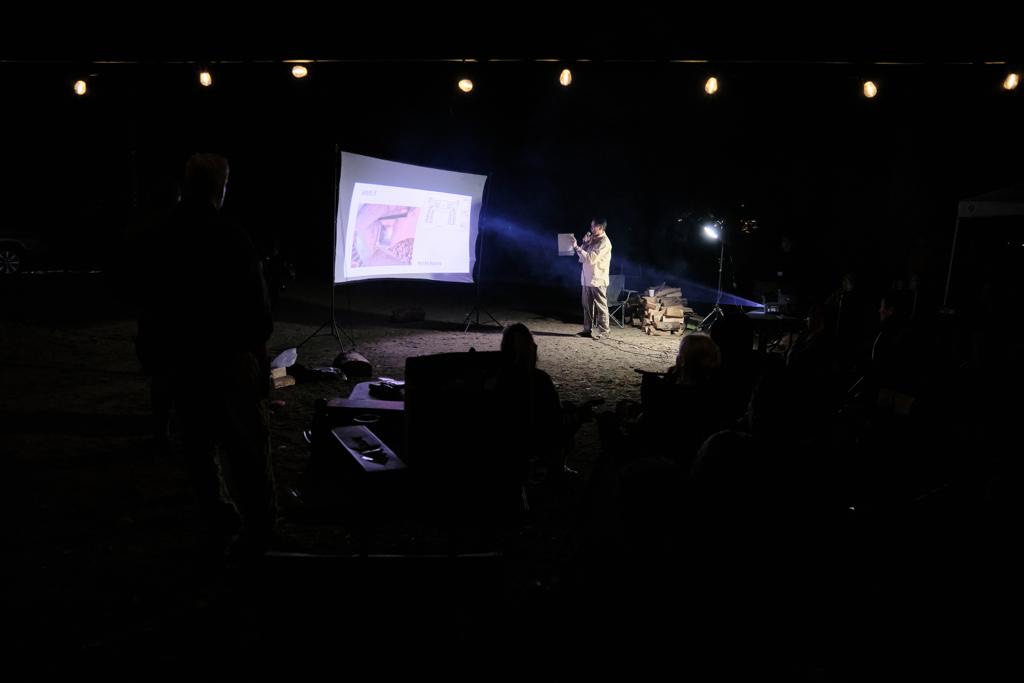
Story #2: YETI Story (true story)
In 1954 H.H. Dalai Lama XIV and all the Tibetan leaders had to go to China to meet with Mao. H.H. Jigdal Dagchen Sakya and H.E. Dagmo Kusho were in Kham with H.E. Dzongsar Khyentse Chokyi Lodro Rinpoche at the time.
H.H. Dagchen Rinpoche got a telegram from H.H. Dalai Lama’s government. They had to go to China.
Rinpoche was giving a big teaching at the time and so he was very upset. There were so many thousands of monks at the teaching. Rinpoche had to leave for China with 200 people.
H.E. Dagmo Kusho and Dungsey Minzu Rinpoche (1.5 years old) stayed with Khyentse Rinpoche. May lamas and monks were left at the monastery since the teaching stopped. Khyentse Rinpoche tried to entertain everyone with camping trips and picnics.
One time they went to the top of the mountain plateau. There were many lamas and dozens of tents. In the morning there was puja followed by games and evening puja.
One night on this side of the valley and the other side of the river there was lots of forest. One night it was very noisy. Rocks were rolling down the hillside. Trees were breaking and then there was this high noise. Like crying. They couldn’t see anything at all. Everyone was scared.
The next day Khyentse Rinpoche told the monks to go over the other side of the river to see. They had to walk way far upstream before they could even cross the river. When they got to the place across the river from camp, they saw a big tree trunks broken and huge rocks piled up. They saw a big footprint like three times the size of a human.
Khyentse Rinpoche said its a sign. Its a Yeti. In Tibetan it is called “Mi’Ge” (mee-gey). Tibetans believe MiGe are protectors – in the same way Snow Lions with green manes are protectors. Since a MiGe had made itself known, the lamas said that it is a sign and something needs to be done.
Two days later messenger monks came from Derge. They said the Derge King’s horses were missing. Two mules were found on top of trees, hanging there. The lamas said it was a bad sign.
When Khyentse Rinpoche, Dagmo Kusho and Minzu Rinpoche, all of the lamas and camping party arrived back at Dzongsar Monastery after the camping trip, H.H. Dalai Lama, and H.H. Jigdral Dagchen Sakya Rinpoche came back. The Tibetan protectors, the Himalayan protector, Yeti had conveyed the message of unfortunate tidings in Beijing for Tibet and Tibetans, at the camping trip simultaneously as negotiations in Beijing ended.
